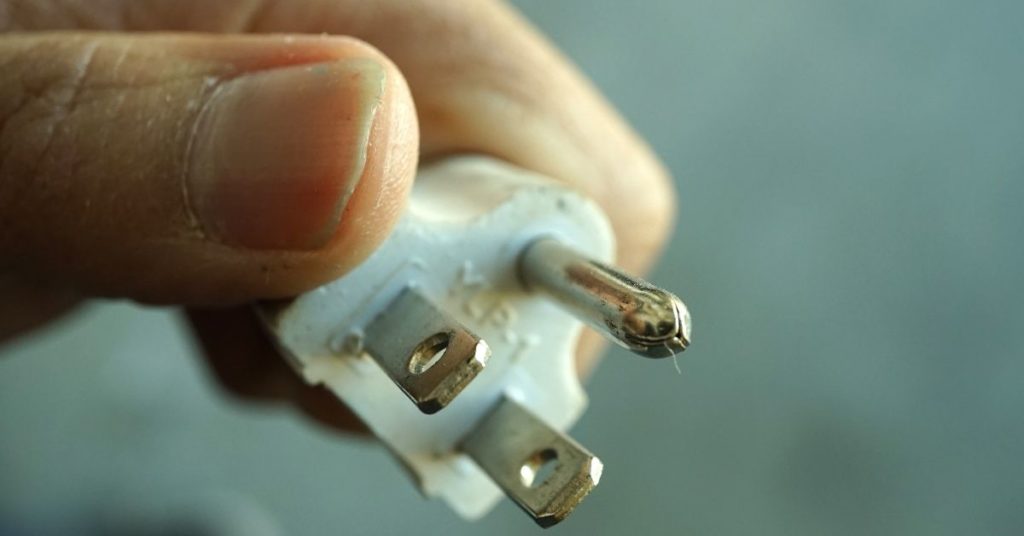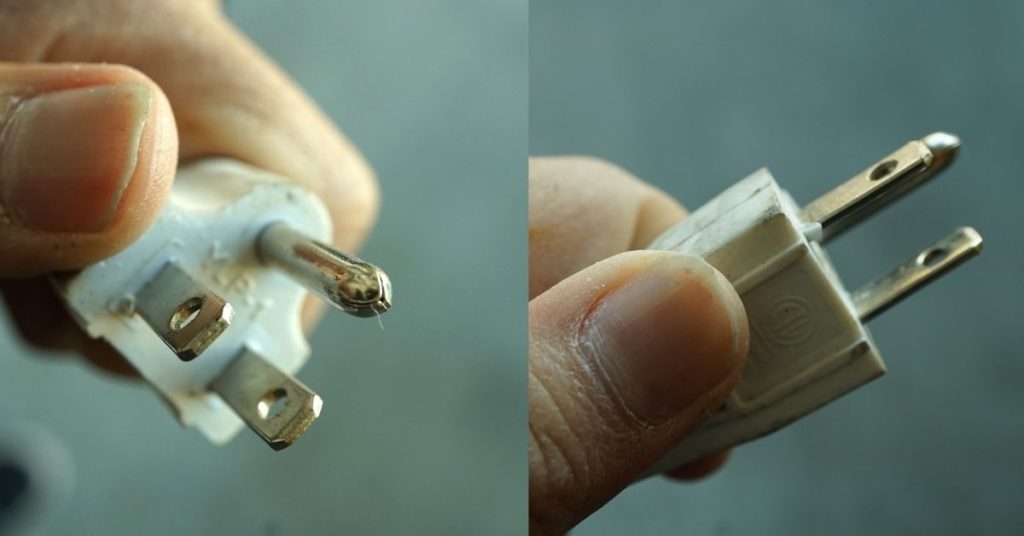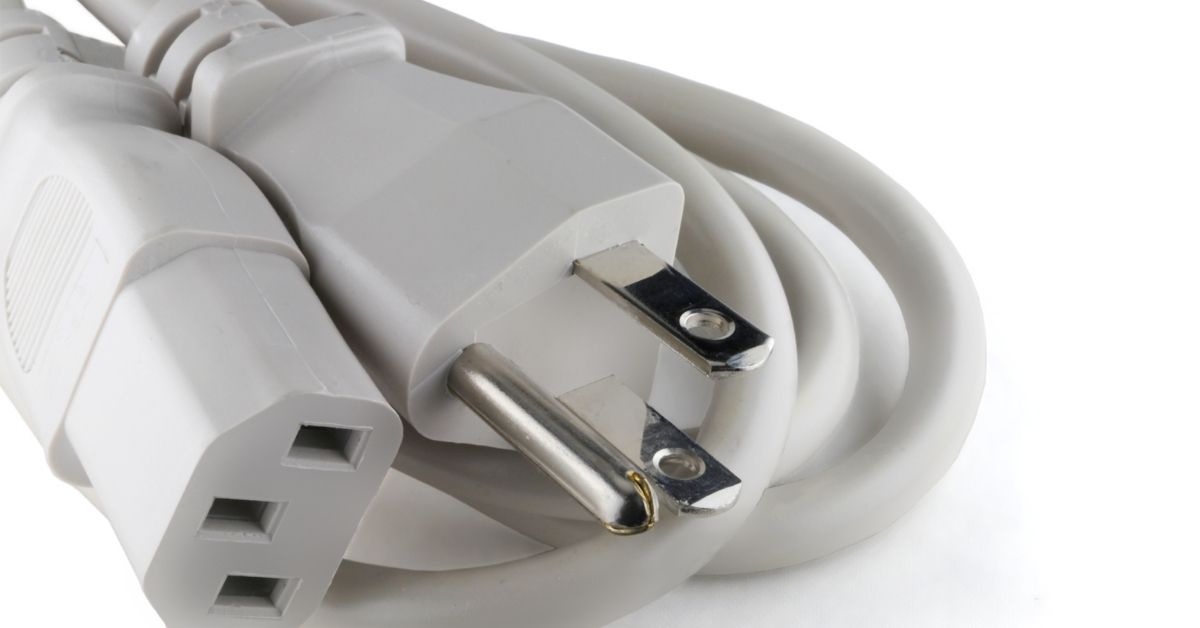Extension cords can be grounded or ungrounded. Grounding is a safety feature that every consumer is encouraged to prioritize whenever they go extension cord shopping because it could protect them from an electrical shock if a short circuit occurs down the line. Many people do not appreciate the grounding on their extension cord because they do not understand what it does.
What is A Grounded Extension Cord?
Most extension cords have a minimum of two prongs. A grounded extension cord has a third prong that, according to provides excess current a return path to the ground. This protects consumers and their equipment.
Many light-duty extension cords come with two prongs. They are not grounded because you are supposed to pair them with appliances that do not use a lot of power. Heavy-duty cords are grounded because they are designed to transmit large amounts of current, which makes them dangerous.
Are Extension Cords Grounded?
Some extension cords are grounded. Others are not. Extension cord manufacturers are not obligated to add a grounding component to their products. Grounding is common in medium-duty and heavy-duty extension cords. It is rare in light-duty extension cords.
Is Grounding Necessary?
The grounding plug on an extension cord creates a path for the current to flow to the earth. This matters in cases where the appliance attached to the extension cord have a metal enclosure, and the electricity has come into contact with the metal enclosure. The grounding is supposed to protect the user and their appliance from powerful surges.

But such surges are only problematic where medium and heavy-duty appliances like space heaters and fridges are concerned. You don’t need to use a grounded extension cord to operate lamps, clocks, and other simple devices because they do not draw enough current to present a significant threat
Why Do Extension Cords Need To Be Grounded?
Because the grounding will protect the consumer from electrocution. Electrical shocks can occur when a malfunction allows a current to run through the metal casing of an appliance.
But if all the appliances in your kitchen with metal casings have grounded plugs, and they have been plugged into a grounded extension cord, the grounding will prevent electrocution in the event of loose wires coming into contact with the metal casings. In the absence of a grounded extension cord, the only other option is to avoid appliances with metal casings.
What Happens If Extension Cord Isn’t Grounded?
An extension cord that isn’t grounded doesn’t have any earth protection. It cannot provide a path for the current if a loose conductor ever touches the metal components of your appliance. In other words, you run the risk of being electrocuted.
Additionally, any excess current your appliance encounters could destroy it. But that is only in situations where a malfunction has occurred. At the end of the day, an appliance that is plugged into an ungrounded extension cord will work.
If nothing goes wrong internally or externally, nothing bad will happen to you or your appliance. Grounding only becomes useful when things go wrong. But that is why it is so important. You never know when a malfunction will occur.
Is It OK To Use An Extension Cord Without A Ground?
It is okay to use an extension cord without a ground if your objective is to operate simple devices like lamps and alarm clocks. It is not okay to plug a medium or heavy-duty appliance into an extension cord without a ground.
You can tell that powerful appliances require a grounded extension cord because they use grounded plugs. If an appliance has a two-prong plug, more than likely, the manufacturer doesn’t believe that grounding is necessary. So you can get away with using an ungrounded extension cord.
How Do I Know If Extension Cord Is Grounded?
Grounded extension cords have three wires. If the insulation has hidden the third wire, you can look at the plug. While ungrounded extension cords have two prongs, the plug of a grounded extension cord has three prongs. The third prong provides grounding protection, which is why you should never remove it.
Grounded VS Ungrounded Extension Cord
Technically speaking, grounded and ungrounded extension cords are the same. Or at the very least, you can use either option to operate your appliances and electronic devices. Neither option will change the way your appliances work. However, grounded extension cords have a third prong that sends any extra current it encounters to the ground, protecting you and your devices.

Devices that use a lot of power require extension cords with three prongs. Extension cords with two-prong plugs should be restricted to simpler items like phones and electric razors.
How To Ground Extension Cord?
If you have an ungrounded extension cord and you want to use it to operate an appliance that requires grounding, your only option is to get a new grounded extension cord. You cannot add grounding to an ungrounded extension cord.
Yes, you can replace the two-prong plug of an ungrounded extension cord with a three-prong plug but that won’t add grounding to the extension cord.
You should only add three-prong plugs to extension cords that have three wires.
If the extension cord has two wires, you have to pair it with a two-prong plug. A three-prong plug cannot add grounding to an ungrounded extension cord with two wires.
What Is The Ground Wire On Extension Cord?
The ground wire is the green wire. If the plug is colour-coded, the green wire will connect to the green screw. It is normally included in power cords attached to appliances with metal cases.
If a fault occurs, such as detached wires or damaged insulation allowing the metal casing and a hot conductor to come into contact with one another, the ground wire will protect the consumer from electrocution if they touch the metal case.
If the grounding wire is absent, a malfunction could cause the metal case to electrocute anyone that touches it.
Can You Cut The Ground Plug On An Extension Cord?
It is a very bad idea. The third prong on a plug is essential because it gives electricity a path through which it can flow if a fault or malfunction occurs. Removing the third prong eliminates the protection provided by the grounding wire.
If the metal case of an appliance becomes electrified, it will electrocute you. People remove the third prong because they want to plug an extension cord with three prongs into an outlet with just two slots.
You cannot fit a three-prong plug into a two-slot outlet without removing the third prong or using an adapter. You are better off using an adapter than removing the third prong.
Ground Prong Broke Off Extension Cord
The ground prong is thicker and longer because it has to be the first prong to connect to the power supply. Additionally, it has to be the last prong to disconnect. Because of its length, it is more likely to break.
This happens more frequently than people realize. For many people, the third prong will break off while they are trying to pull the plug out of the outlet. In other words, the prong will get stuck in the outlet, forcing them to remove it before they can use the outlet.
You have to shut the power to the outlet off at the circuit breaker panel before you attempt to remove the prong.
Once the prong is out, you are technically free to use the extension cord even though the plug has only two prongs. The practice is risky, which is why it is discouraged by electricians. But the absence of a third prong will not stop the extension cord from working.
Is It Safe To Use An Extension Cord With A Broken Ground?
If your extension cord has a plug with a broken ground prong, a malfunction could result in burns and shocks. This won’t happen right away. An extension cord with two prongs works just like an extension cord with three prongs. Even after the ground prong breaks, the extension cord will continue to work. But if something goes wrong, you don’t have any protection.
How Do You Fix A Broken Ground Prong?
If the ground prong breaks off, you cannot put it back. The easiest solution is to replace the entire extension cord. If you don’t want to throw the old extension cord away, you can just replace the broken plug with a new one. The process involves the following:
1). Buy a replacement 3-prong plug. Do not replace a 3-prong plug with a 2-prong plug.
2). Cut the old plug off. You can do this with a knife. You can use that same knife to remove half an inch of the outer casing on the cable. Do not cut the wires on the inside.
3). Remove half an inch of insulation from each of the wires inside the cable.
4). Connect each wire to the right screw. Green is ground, white is neutral, and black is hot. This isn’t always the case. Check the manual to confirm the meaning of each color. If the new plug has color-coded terminals, you can just connect each wire to the terminal screw that matches its color.
5). Turn the screws until they are secure. Re-assemble the plug. If you connected the wires to the right terminals, the new plug will work just like the old one.

